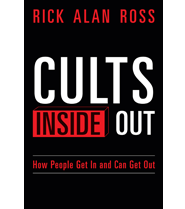Yellowjackets Illustrates How Cults Can Prey on People With Trauma Histories
Published By admin
“We’re all like this, aren’t we?”
Those are the poignant words spoken by Natalie to Misty in Season 2, Episode 6 of Showtime’s Yellowjackets. The women are in their 40s. Nearly 25 years earlier, they were on a high school soccer team together, and headed to a championship game when their plane went down in the wilderness. The wildly popular show toggles between what Natalie, Misty, and their peers did to survive for 19 months in the wilderness (including, as we see on-screen in great detail this season, cannibalism) and how it affects them in the present day, as adults.
Now, midway through the season, Natalie is slowly beginning to realize that they all struggle to form attachments with other people in the aftermath of their shared, and quite severe, trauma. The location of this revelation is significant, as she and Misty are together at a “wellness center”—really, a rural waterfront campus home to a cult—run by another survivor of the crash, Lottie Matthews, who is described as a “diagnosed schizophrenic” and who had visions and a sort of mystical power during their time in the wilderness. The former soccer teammates aren’t at the wellness center for R&R, exactly. Natalie ended up there after she was kidnapped during a suicide attempt by some of Lottie’s followers and Misty came to rescue her. But after a few days of reluctantly participating in group activities, it’s as if Natalie also recognizes they aren’t so different from Lottie’s followers either. They, too, are “like this”: emotionally suffering and isolated.
As a psychiatrist, I watched these scenes with interest, wondering if there was something about people with mental health histories, particularly trauma, that may make them more susceptible to places like Lottie’s center, where participants have limited contact with the outside world, have handed over their personal files “willingly,” and dress all in purple. Places with appealing, even gorgeous exteriors and enticing promises about health and healing that conceal a system of rigid rules, authoritarian leadership, and an ethos of control. In other words, cults.
In my psychiatric practice, I’ve never, as far as I’m aware, had my own patients join a cult (or start one), but I have often noticed just how vulnerable my patients are to wellness practices from influencers. They’ve tried excess green tea, microdosing, or supplements in hopes that it will cure their depression. These options seem all the more appealing as solutions for my patients who have felt that traditional methods of therapy and medication have been less effective, were negative or harmful in some way, or have failed them entirely. In trying these alternative methods, what they are really looking for is hope.
Cults can supply that hope with a nontraditional answer, and fill in the gap where other mental health treatments (like seeing me!) have failed, says Glenn Patrick Doyle, a trauma therapist and the board president of SEEK Safely, a nonprofit organization that advocates for ethics and accountability in the self-help industry. And the hope supplied by cults may be more robust and long-lasting than a bottle of CBD oil. “They often provide someone who is suffering with a hypothesis or story about why they’re suffering that seems to make more sense than the stories they’ve been told by others,” he explains. “They provide tools, skills, and philosophies that seem to be more immediately or ultimately helpful than those provided by others.” The support goes much further than offering a new framework, though, says Doyle. “Perhaps most importantly, they often provide a supportive environment of people who have also suffered, but seem to have achieved relief via this nontraditional path.” For people seeking connection, or even struggling to find it, cults offer the promise of belonging.
Some of the aspects of Lottie’s cult on Yellowjackets, like the purple clothing, and the fact that contact with family members is discouraged (“our anchors are at the compound”), might seem like features of a pretty extreme cult. But Doyle says they are actually characteristic of how many cult-like groups in the wellspace operate: “Supposedly, everyone is free to do whatever they want, but it’s made clear that to achieve the benefits the group or guru promised, followers should follow the unwritten ‘rules.’ ”
Take Teal Swan and her followers, for example. Swan describes herself as having been born with extrasensory abilities, and states that her mission is to “transform human suffering to an empowered and authentic life.” She started with a YouTube series, and has expanded to books and retreats, and now amassed millions of followers, many of whom deal with trauma, depression, and suicidal thoughts. She is controversial for many reasons—watch the Hulu documentary The Deep End for more—but one is her targeting of those with mental health struggles and her approach to suicide, which many experts feel is dangerous and even encouraging of it.
Content retrieved from: https://slate.com/technology/2023/05/yellowjackets-lottie-cult-trauma-self-help.html.






